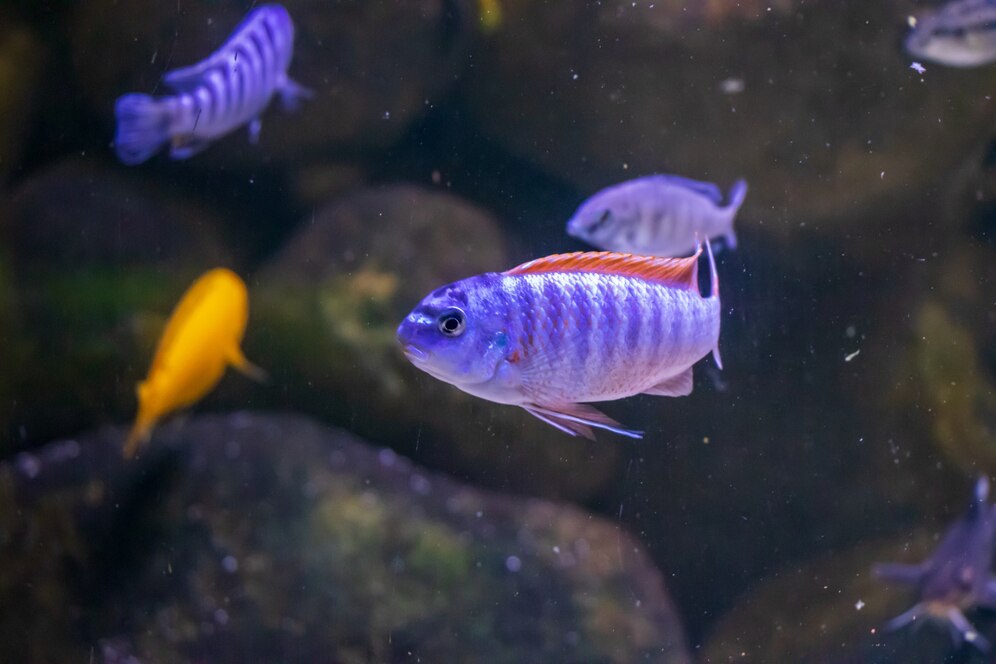
The Science Behind Formulating the Perfect Fish Feed
The process of developing a balanced meal for fish that satisfies their nutritional requirements and promotes their growth into healthy, strong fish is known as "fish feed formulation." Understanding the nutritional needs of the fish species, choosing the right components, and figuring out the best way to combine these elements to achieve the intended result are all steps in the formulation process.
Fish have different dietary needs based on their species, developmental stage, and living habitat. As a result, determining the specific nutritional needs of the fish being raised is an important step in the composition of fish feed. Their nutritional needs depend on their feeding patterns, physiological stages, and environmental factors, including temperature and the amount and type of natural food that is available in the culture system.
Fish feed formulation is crucial to maintaining the health and well-being of the fish.
The selection of feed ingredients for aquafeeds should take into account three factors: I. quantity—the amount of readily available ingredients; ii. quality—nutrient composition and the presence of any anti-nutrients (substances that directly interfere with nutrient absorption or contaminants) iii. price of ingredients. Fish feed management also faces difficulties with feed composition, processing, storage, handling, and transportation.
Fish feed formulation and manufacturing is a complex process that requires knowledge of nutritional needs, feed ingredient properties, feed production technology, and, most significantly, biological information. The production of fish feeds must take into account each of these factors.
While feeds for fish in the growing stage must also support growth and health, meals for fish larvae or fingerlings are meant to support rapid growth, health, and survival. Conditions for feed formulation and manufacture are also determined by the physical properties of feeds, such as particle shape, water stability, buoyancy, and durability during handling.
Three factors to take into consideration when developing the fish feed formulation are:
- Proteins: When determining nutritional components, protein is typically the first factor taken into account. Fish tissues require protein for their growth, development, and repair. It is an essential nutrient that has a major impact on the metabolism, digestion, and immune system. Depending on their life stage, fish require varied amounts of protein, with young fish requiring more than adult fish. The protein needs of the fish being produced should be considered while formulating fish feed.
- Fats: The production of energy and preserving the integrity of cell membranes both depend on fats. Depending on their species, life stage, and environmental factors, fish require it in varied amounts. Fish feed must have fats because they increase the nutritional value of the feed, make it more palatable, and encourage growth. Protein in the diet is mostly used for tissue building, whereas fat serves as the main energy source and promotes the growth of adipose tissue. Since fats have a higher energy density than carbs, they must make up the majority of the energy in a diet.
- Carbohydrates: Energy is obtained from carbohydrates, which are also necessary for healthy digestion and nutrient absorption. They are also crucial for preserving the fish's optimum osmotic balance. Fish require different amounts of carbohydrates, which again depend on factors such as species, life stage, and dietary needs.
In addition to proteins, fats, and carbohydrates, fish also require vitamins and minerals. Fish feed must include a lot of vitamins, especially vitamin C, to boost the fish's resistance to illness and stress. The majority of the minerals in water are absorbed by fish through their gills and skin, particularly calcium. Varying minerals are absorbed at different rates by fish. When including minerals in feed, it is best to use high-absorption inorganic, organic, or chelate salts. The right amount of trace elements must be added to the fish meal.
Conclusion
Fish feed formulation entails choosing the right components, figuring out their nutrient makeup, and the right inclusion levels to satisfy the fish's nutritional requirements.
Once the feed has been developed, it needs to be evaluated to make sure it satisfies the fish's nutritional needs. The feed is assessed for its overall nutritional value, digestibility, and palatability. During the testing phase, the fish are fed the feed, and their growth, well-being, and general performance are observed.
Quality control is the last step in the formulation of fish feed.
The science behind creating the ideal fish feed requires a thorough understanding of the nutritional needs of fish, the chemical makeup of the substances in feed, and how these ingredients interact with fish digestive systems. Calculations are used during the feed formulation process to establish the ideal nutritional levels and ingredient ratios.
The art of creating the ideal will keep developing. To guarantee that they are giving the best feed for the fish being grown, fish feed makers must stay current with the most recent research and advances in the business.
At Intan, we are here to provide you with premium fish feed. Our feed is tailored to meet the specific needs of each species. Every feed can spark positive change and create a future promoting quality, resilience, and well-being. We aim to serve the needs of hobbyists and breeders for the best quality of each species’ unique requirements. To know more about us, check out our Instagram page or find us at our nearest out spot.
We are not just a brand; we are stewards of the underwater world. We believe in the well-being of our friends and their mental health. Understanding and addressing the stressors that affect fish is not just a concept for us, it's a commitment. Through our dedication to research and innovative products, we aim to ensure that fish everywhere can lead happier, healthier lives.
